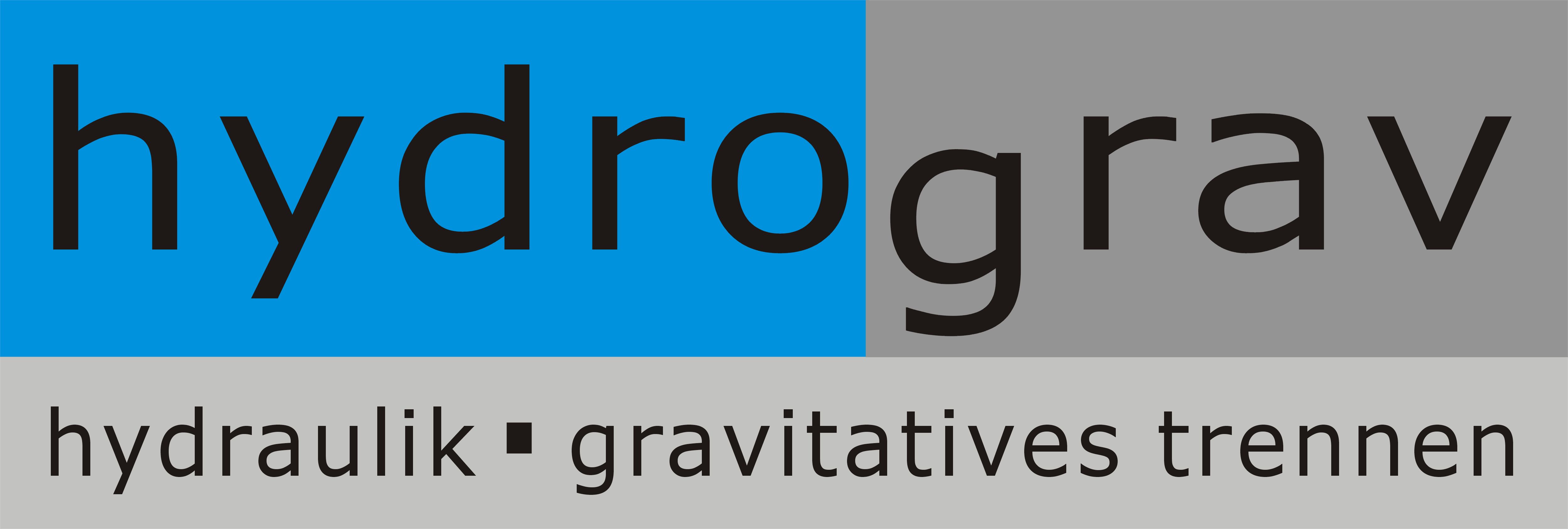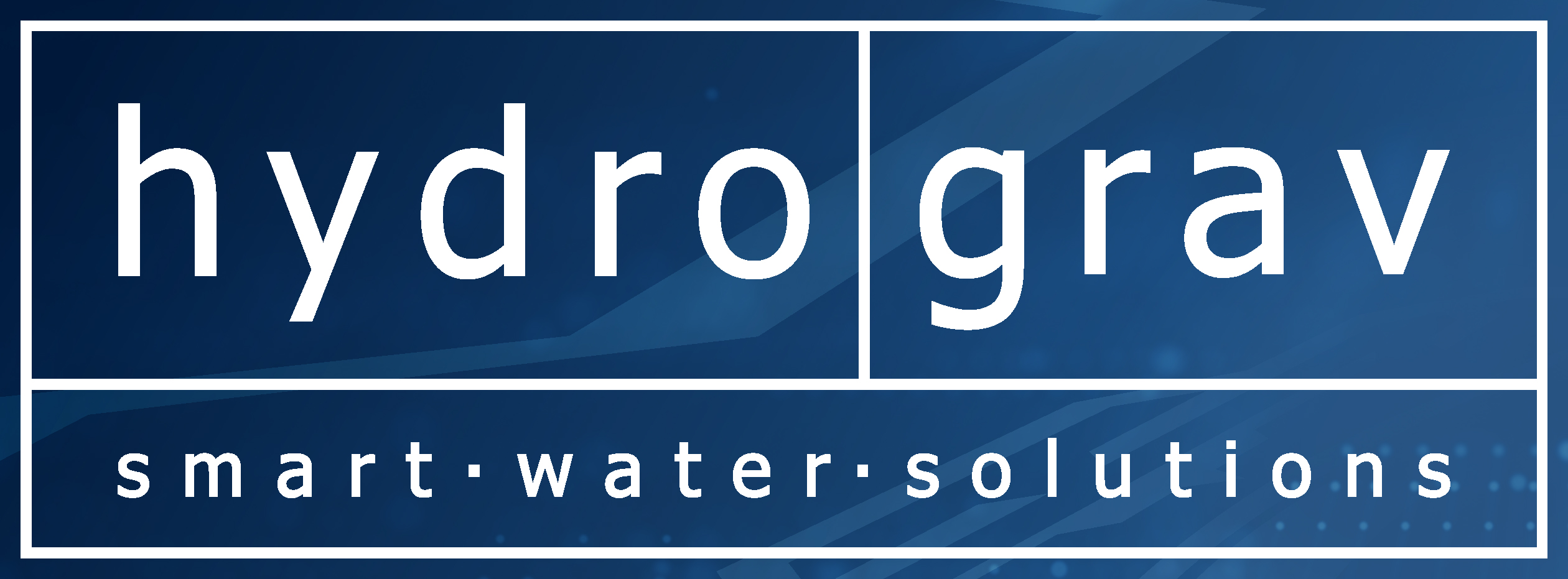HYDROGRAV ADAPT-CONSTRUCTIONS
Dresden-Kaditz
„We now have a significantly improved cleaning performance and thus a much lower pollution on the river Elbe.“ – Ralf Strothteicher, Technical Manager, former Technical Director of the municipal drainage operation Dresden in the Saxon newspaper dated March 16, 2016.
A better cleaning performance of the secondary settling tanks with hydrograv adapt not only means clearer discharged water but also reduced COD and phosphor emissions and relating thereto the lower precipitant application and finally the ability to operate the activation stage with higher dry substances.
After the conversion of the secondary settling tanks of the wastewater treatment plant Dresden-Kaditz significantly better discharge values are achieved with regard to the turbidity and the filterable substances. The average monthly discharge turbidity continuously drops to about 2 FNU and thus amounts consistently to only one third of the values before the conversion.
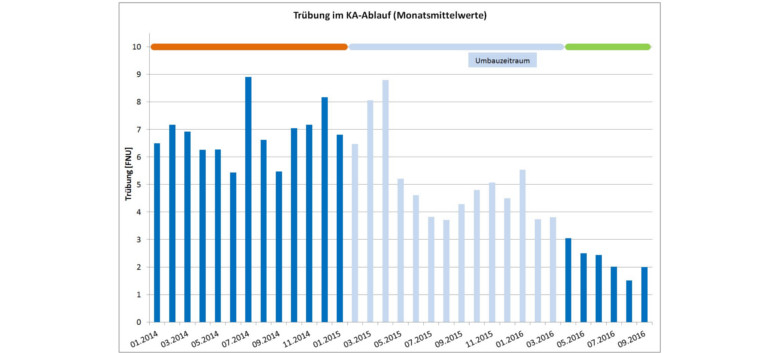 Picture: Turbidity in the discharge of the wastewater treatment plant Dresden-Kaditz before and after the conversion of the secondary settling tanks with hydrograv adapt inlet structures.
Picture: Turbidity in the discharge of the wastewater treatment plant Dresden-Kaditz before and after the conversion of the secondary settling tanks with hydrograv adapt inlet structures.
During the conversion this can doubtlessly be seen with the naked eye. The clear water of an already refitted tank is much cleaner at the same load and contains fewer flocks.
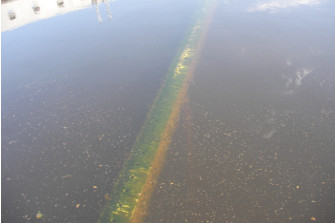
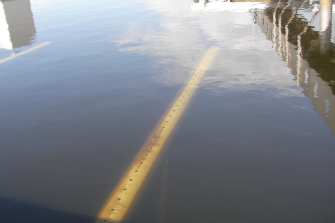
Abbildung: Picture: Look into the secondary settling tanks in the area of the drainpipes in a tank with an old inlet structure (left) and an already converted tank (right). Clean and flock-free clear water.
With the turbidity the measured values for filterable substances and also for the total phosphor decreased: a significant improvement of continuous 0.1 to 0.2 mg/l for Ptot is proven. Since the 2-point precipitation is operated with the same dosing strategy before and after the conversion, the decrease of Ptot is due to the reduced output of filterable substances. After the conversion they now even require significantly less precipitant at a clearly lower Ptot in the expiry of the wastewater treatment plant, thus saving operating costs.
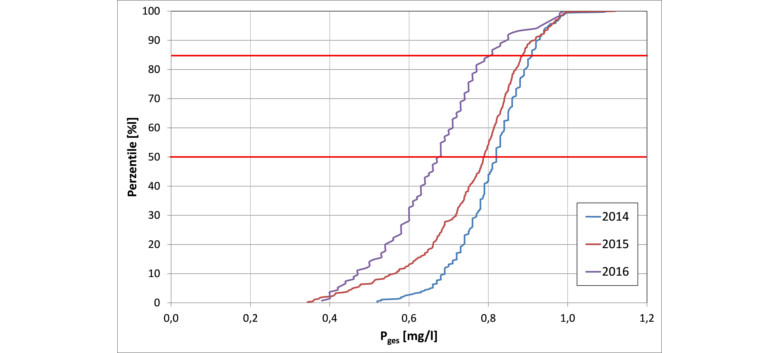 Picture: Ptot concentration in the discharge of the wastewater treatment plant Dresden-Kaditz in several years of operation.
Picture: Ptot concentration in the discharge of the wastewater treatment plant Dresden-Kaditz in several years of operation.
With this relatively simple conversion of the secondary settling tanks inlet structures the discharge values were significantly improved even without filtration. The tanks are simultaneously more effective regarding hydraulic and material load. With the conversion the structural expansion of the secondary clarification was avoided, and at the same time a higher dimensioning of solids content for the activation was enabled. This led to significant investment cost savings in activation tank volume.
Conclusion: Height-variable inlet structures define the state of the art for secondary settling tanks in wastewater treatment plants without filtration with minimal filterable substances and discharge turbidities of about 2 FNU.
Source: Armbruster, M. Barth, M.: Kläranlage Dresden – Potenziale moderner Nachklärbeckeneinläufe, in: wwt – Wasserwirtschaft Wassertechnik – Modernisierungsreport 2016/2017, 2017, pp 24-30.
